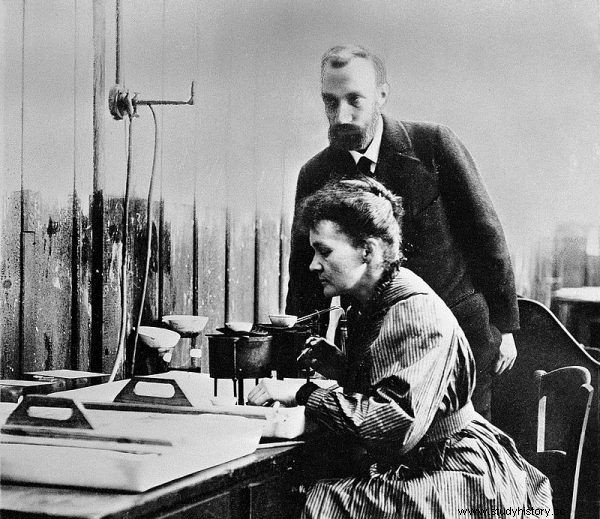The Polish Nobel Prize winner and her husband have been researching radioactive elements for many years. Two of them were discovered and described first. Twenty years later, in a lecture in the US, she had the opportunity to reflect on the significance of these achievements. What conclusions did she reach?
The discovery of radium in 1898 initiated many years of work, first carried out jointly by the Curie couple, and then - after Piotr's death - by Maria Skłodowska-Curie herself. Just before World War I, in 1914, even the Radium Institute was opened, where the use of radioactivity in physics, chemistry and medicine was studied. Of course, it was headed by a Polish Nobel Prize winner.
Even during the war, radiology proved to be useful, and ambulances with X-ray machines - sometimes carried out by a physicist herself! - more than once useful at the front. Unfortunately, after the ceasefire, there was not enough money for further research, which required rare and expensive advice.
"We've had good results"
In search of funds, the brilliant Pole, thanks to the support of the journalist Marie Mattingly Maloney, ended up in the United States in 1921. During the six-week visit, she took part in many press conferences and banquets, and gave lectures summarizing her work. During one of them, which took place on May 14 at Vassar College in New York, she had an extraordinary reflection on… radium.

Maria and Pierre Curie worked on the isolation of radium for several years.
“Rad is no longer a child, he is over twenty years old,” Skłodowska-Curie began her story. She had high hopes for its practical application:
From a practical point of view, the most important property of its rays is that they exert a physical effect on the cells of the human body. This effect may prove useful in treating several conditions. We have achieved good results in many cases. Of particular importance is the treatment of cancer.
It was the prospect of using radium in medicine that justified - according to the physicist - the need to obtain larger amounts of the element, even despite its high price. "Rad is a hundred thousand times more expensive than gold" - admitted the Polish Nobel Prize winner.
"For the beauty of science"
At the same time, Skłodowska-Curie pointed out that research should not be considered solely in terms of its future applications. After all, you never know what their effects will be useful for. She cited her own story as an example:
(...) when rad was discovered, no one could have imagined that it would find a therapeutic application. The work was purely scientific. Here is proof that research work cannot be judged in terms of its present utility. It has to be done for itself, for the beauty of science, because there is always a chance that the discovery - as in the case of radium - will benefit humanity.
"There is always a lot of room for experimentation and I hope we can make some beautiful progress in the coming years," she concluded. On one point, she was surely right:you can never predict all the uses of a discovery.
Source:
Trivia is the essence of our website. Short materials devoted to interesting anecdotes, surprising details from the past, strange news from the old press. Reading that will take you no more than 3 minutes, based on single sources. This particular material is based on:
- Words that changed Poland , ed. Joanna Wojdon, Dolnośląskie Publishing House 2018.
